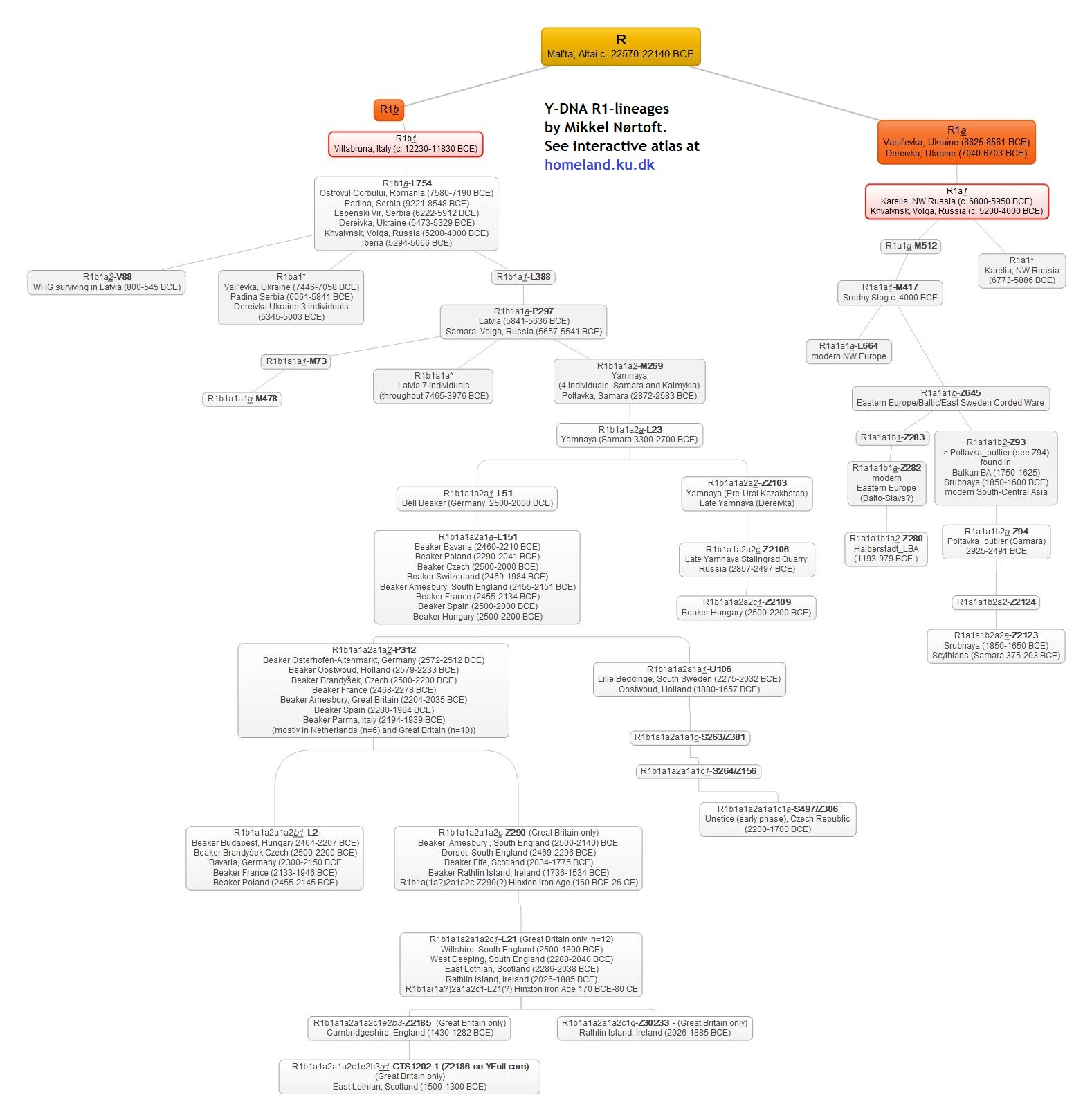Legend:
![]() EHG (Eastern Hunter-Gatherers)
EHG (Eastern Hunter-Gatherers)
![]() WHG (Western Hunter-Gatherers)
WHG (Western Hunter-Gatherers)
![]() CHG (Caucasian Hunter-Gatherers) and Iran Mesolithic, Iran Neolithic, Iran Chalcolithic, etc.
CHG (Caucasian Hunter-Gatherers) and Iran Mesolithic, Iran Neolithic, Iran Chalcolithic, etc.
![]() Anatolian farmers, also known as EEF (Early European Farmers)
Anatolian farmers, also known as EEF (Early European Farmers)
![]() Levant farmers, including Natufian culture
Levant farmers, including Natufian culture
![]() SHG (Scandinavian Hunter-Gatherers), mix of EHG + WHG
SHG (Scandinavian Hunter-Gatherers), mix of EHG + WHG
![]() Steppe-derived R1a lineages, Y-DNA (males) defined as EHG with CHG admixture. Defining subclade SNP in ( ). See R1 tree for chronological context
Steppe-derived R1a lineages, Y-DNA (males) defined as EHG with CHG admixture. Defining subclade SNP in ( ). See R1 tree for chronological context
![]() Steppe-derived R1b lineages, Y-DNA (males) defined as EHG with CHG admixture. Defining subclade SNP in ( ). See R1 tree for chronological context
Steppe-derived R1b lineages, Y-DNA (males) defined as EHG with CHG admixture. Defining subclade SNP in ( ). See R1 tree for chronological context
![]() Steppe-derived autosomal DNA ancestry, including females defined as EHG with CHG admixture)
Steppe-derived autosomal DNA ancestry, including females defined as EHG with CHG admixture)
![]() The individual's ancestry is uncertain/unspecified
The individual's ancestry is uncertain/unspecified
![]() Equal mix of ancestry in an individual
Equal mix of ancestry in an individual
![]() Confirmed finds of wool
Confirmed finds of wool
![]() (transparent) Unconfirmed/controversial finds of wool and zooarchaeological indications of wool production (see individual comments and references)
(transparent) Unconfirmed/controversial finds of wool and zooarchaeological indications of wool production (see individual comments and references)
![]() Confirmed finds of wheels
Confirmed finds of wheels
![]() (transparent) Unconfirmed/controversial finds of wheels and/or clay models of wagons suggested to have had wheels (see individual comments and references)
(transparent) Unconfirmed/controversial finds of wheels and/or clay models of wagons suggested to have had wheels (see individual comments and references)
